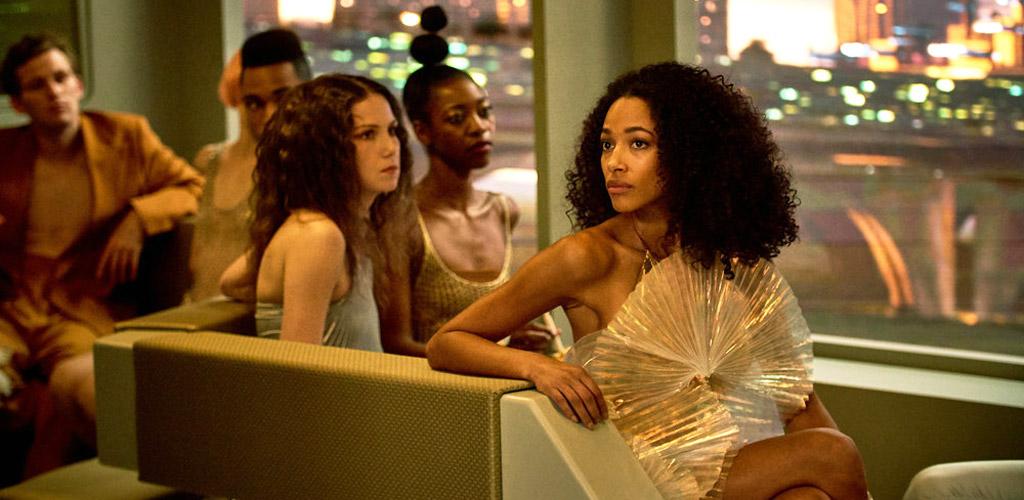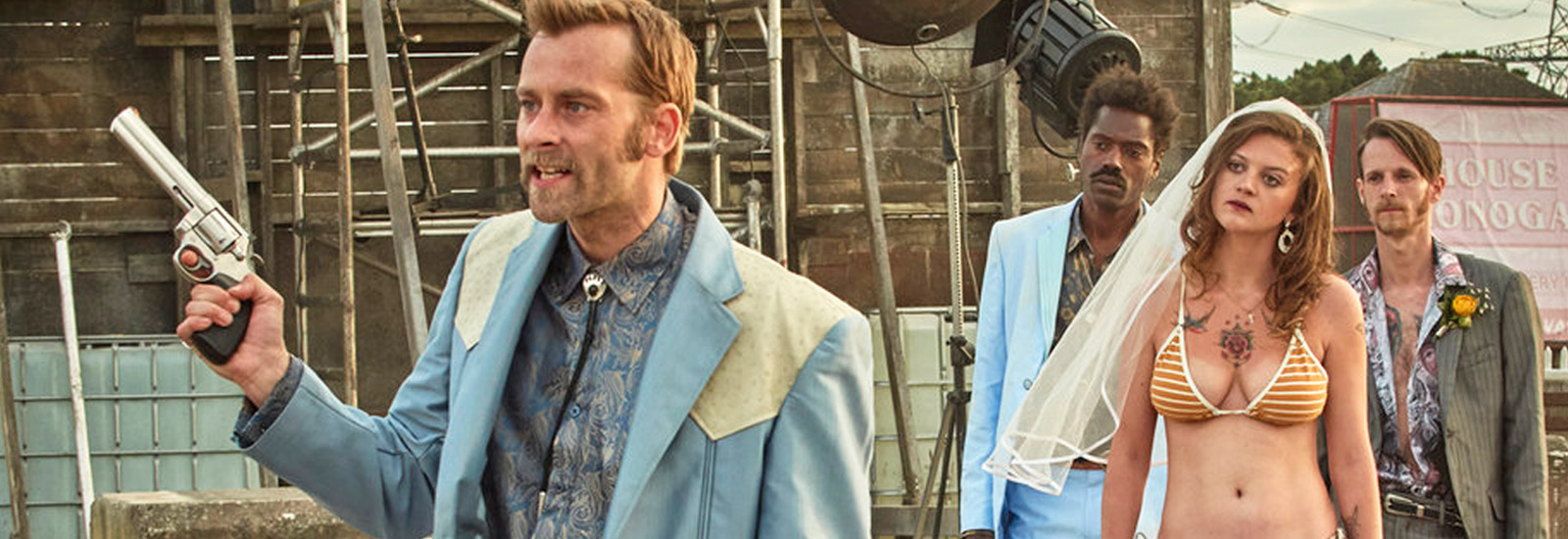
Aldous Huxley’s classic sci-fi 1932 book, Brave New World, stands as one of the earliest dystopian novels, and it’s remained surprisingly relevant. The good news for genre fans is that the book’s newest adaptation, as a Peacock TV series, results in an early vote of confidence for NBCUniversal’s streaming service (moreso than the David Schwimmer-starring spy comedy, Intelligence). The end result is alternatingly sleek and gritty, as well as charming and frightening. It’s representative and modern as well as cool and sexy and pulp-soaked. And perhaps most importantly, it’s a high-concept series that doesn’t get precious about the concept in question. Instead, this Brave New World operates with a roving eye upon captivating characters, and it refuses to take itself too seriously.
You don’t have to have read the Huxley novel to understand (and enjoy) this series, but let’s talk plot because this image ^^^ demands a slight explanation. Much of Brave New World takes place in a supposed utopia, New London, where everyone is “happy.” (Not everyone is happy.) All privacy has been outlawed, as has the concept of monogamy. That last construct is actually seen as the root of the downfall of civilization. This ^^ is what happens when people are allowed to get married, according to the New London powers that be. Monogamy = jealousy = violence = evil. The photo actually comes from the Savage Land theme park (it’s got a Westworld feel, yes, only more debauched and a lot less confusing), which is where the Savages (outcasts) reside and make a living by acting in vignettes when New Londoners swing in for educational purposes.
That’s only one way that this series revels in hyperkinetic experimentation. It also leans into pulpiness in places and often douses itself within an eerily antiseptic gloss in the New London settings. There, residents are designated by caste (Alpha, Beta, Epsilon, etc.). Everything looks perfect, and if that illusion starts to waver, a pharmaceutical aid (Soma) is there to help people calm the hell down and avoid negative emotions — all the better to preserve one’s energy for partying and dance-orgies.
Yet there are cracks in the facade that begin to trouble an Alpha-Plus counselor, Bernard Marx (Harry Lloyd of Game of Thrones), and a Beta citizen, Lenina Crowne (Jessica Brown Findlay from Downton Abbey), who venture out to the Savage Land on a day trip.
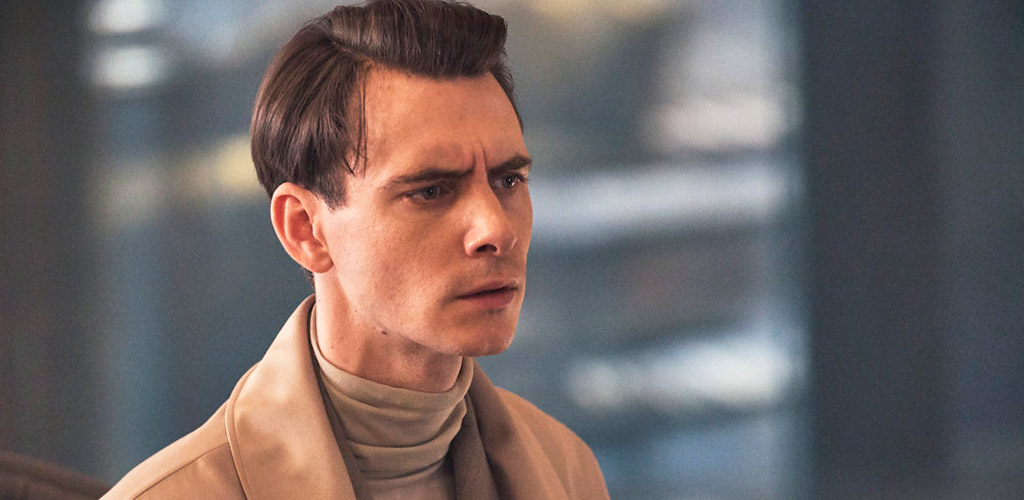
As you might guess, the pair’s voyage doesn’t end well. Somewhere in the mess that follows, they encounter Alden Ehrenreich’s John The Savage, and the most delightful dynamic — between Bernard and John — of the series is born. And nothing on this show (and perhaps in New London society) will ever be the same.
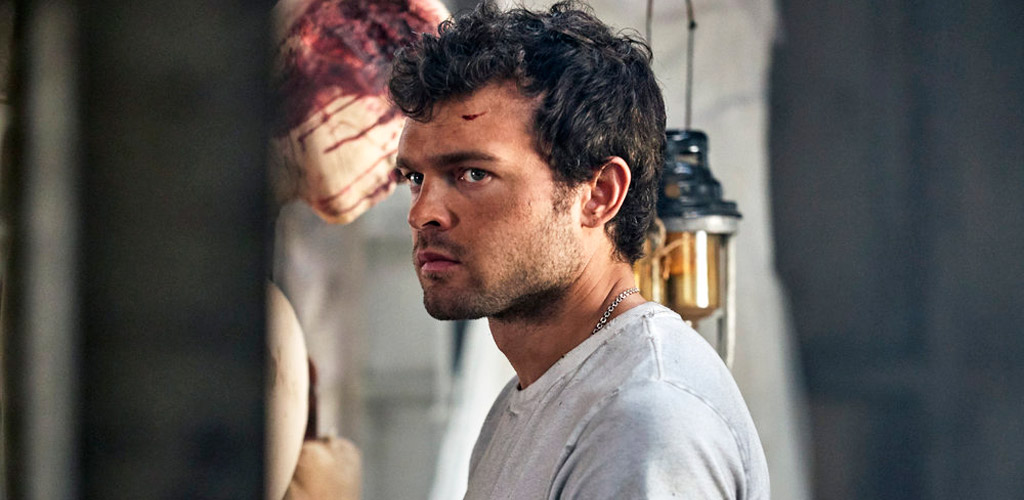
Findlay makes a worthy turn with the material that she’s given, but this is largely Lloyd and Ehrenreich’s show, at least during initial episodes. For sure, Lloyd does a fine job of moving past his infamous notorious role (in which he both wore a Targaryen wig and a molten crown of gold). His salesman-approach as Bernard Marx is a pleasure to behold. As are his inevitable-yet-graceful descents into panic mode if things don’t go as planned, along with watching John’s distinct lack of buying what Bernard is selling. For his part, Ehrenreich successfully (perhaps even with more nuance than necessary) swaggers beyond being known by mainstream audiences for Solo.
Another weapon in this gun’s barrel: Demi Moore as a Savage woman, one who dared to procreate in a non-test-tube manner, and she’s fantastic. It’s a role where Moore disappears in such a way that one can blink and see Patricia Arquette. That’s not simply down to the stying, for this is a very Patty Arquette type of role. This is one hardened badass (with a soft interior) who isn’t afraid to get dirty. Or bloody.
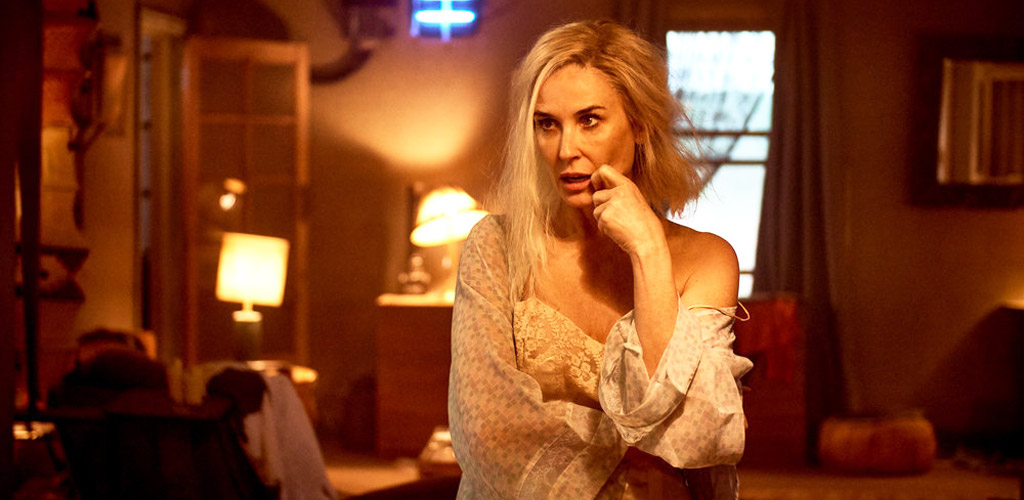
That’s not to say that the show entirely focuses upon the Savage Land setting, although that will be key into luring viewers into the slickly-crafted saga. On many occasions in New London as well, the show serves up a sensory buffet, including scenes crafted with mature audiences in mind. A society that revolves around sex, drugs, and no virtue to be found other than pleasure suggest interesting questions on personal autonomy and how much freedom people can be seduced (often literally) into relinquishing. One can either meditate over the sometimes heady questions the story offers (although the show doesn’t pretend to be profound), or simply settle in and enjoy the spectacle of it all.
On a serious note, the representative nature of the show (even with three white leading actors) is strong, with an LGBTQ+-positive stance made explicit. There’s also a substantial tweak from the source material with retiring the book’s Native American stereotypes as depicted with the Savage reservation. I’m not saying that this show recontextualizes that aspect of the story on any level close to HBO’s Watchmen, but it’s a conscious shift, along with the show’s exploration of the clash between rural life and a cosmopolitan one. One can also see parables lurking in the shadows, but the show takes great pains to not weigh down viewers in heavy exposition or get too preachy.
As far as summer shows go, Brave New World might be ideal, and it scores points because it can be appreciated on multiple levels. Controversies with clones await, along with a celebration of sexuality that takes a handful of unexpected turns, sometimes for the better, and sometimes not. How savage, not to mention kind-of brave, although the show (refreshingly) never claims to be heroic.
‘Brave New World’ premieres on Peacock’s July 15 launch day.
